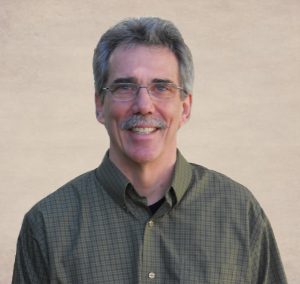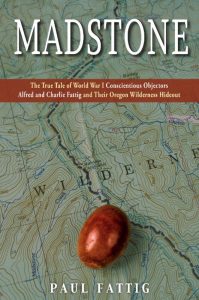Elizabeth Raynal is a senior at Southern Oregon University, studying English and Outdoor Adventure Leadership
As the internet expands into a virtual marketing front, businesses are shifting their outreach tactics subtlety, yet more aggressive and effective. Any social media sight open to advertisers is littered with click bait headlines, and as technology advances, the headlines are getting harder to resist. Linguistically, there are a multitude of click bait approaches, often accompanied by digital attractions intended to maximize reader curiosity. This paper dissects the psychological appeal to click bait, and what journalists are doing to increase reader interest.
We’re All Victims of This Unavoidable Internet Trap: What You…
This statement is just an example of what many psychologists and linguistics have studied in order to understand why certain online headlines and posts become so dire to read (or watch) by online users. The internet has become a leader in communication and is constantly advancing to share more information to more people. And through the invention of social media, an immeasurable number of businesses and media networks have developed a new way to increase consumers and revenue—Clickbait. According to the Journal of Social, Technological, and Environmental Science, “Click Baiting is one of the many strategies used by online news journalists with the intent of making their headlines more attractive and, therefore, obtaining more clicks” (Alves 197). This new phenomenon shows little academic research or well-developed data; however, scholars have concluded that the formula behind clickbait includes forward-reference strategies and relatable terminology which urge readers to satisfy their curiosity and succumb to headline links.
While we scroll through various forms of information-based social media, particularly Facebook and Twitter, there is one factor that predicts our next click: Curiosity. According to the Educational Psychology Review: “More than half of definitions [on curiosity] included the need for knowledge or information as a defining feature of curiosity. This suggests that thinking and reasoning about the knowledge one has and the knowledge one desires may be required at either a conscious or automatic level in order for curiosity to arise” (Grossnickle 52). One must measure the information they know in accordance with what they want to know, then the level of curiosity will be determined. This is where journalists publish articles that appear like never before seen information to intrigue readers. For example, W Magazine posted an article titled: “The 25 Most Daring Dresses of All Time” (Petrarca 2017) in reference to celebrity award shows. The awards had already been aired, but the article was posted just after the season was wrapping up in January, so it was still a relevant topic. Readers may have seen an award show and wanted to relate to what they had seen, or were curious about what they may have missed. An article as menial as this, in relation to hard news, still catches the attention of readers. This is a concept psychologist George Loewenstein explores: “The key to understanding curiosity seeking lies in recognizing that the process of satisfying curiosity is itself pleasurable” (Loewenstein 90). This means that by coming to a resolution, one experiences relief and gratification. W Magazine readers likely have shown interest in similar media genres, and journalists used linguistic tactics to heighten their curiosity and lure them into reading such articles.
The most common form of click bait occurs in what linguists refer to as forward-reference. Jonas Blom and Kenneth Hansen explain that, “forward-referring headlines are considered phoric because the reader needs to locate the entities that are being referred to later in the full text or discourse, i.e. ‘needs to look elsewhere’ in order for the headline to make sense” (Blom & Hansen 92). Most headlines point readers in a specific direction, but intentionally omit the main point of the article. This arises curiosity and urges people to read further. The art of forward-referencing is separated into two factors: Deixis and cataphora. Both are similar tactics pointing to a discourse, only in different ways. Deixis is when, “the pronoun can be regarded as a sort of teaser, an information gap (88). For instance, This is How to Save Money While Traveling, engages readers on wanting to know what this is; how to save money. Cataphora, though also employs the use of pronouns, points readers to a single conclusion: ‘The greater ‘the distance’, so to speak, between 3PP [third person pronoun] and NP [nominal phrase], the greater an effect of suspense and anticipation (88). If an article were to say, He Traveled Around the World for Three Years, and Never Spend more than…,” he is the cataphora. Readers firstly want to know who he is, then how he did it. As a bonus, ellipses act as a form of deixis; a sort of cliff-hanger to increase suspense. The more ambiguous the relationship between the prnoun and the event is, the greater the information gap and the more change of readers submitting to click bait.
In addition to forward-reference, journalists use trendy language to connect with their readers. Slang words, although too unreliable to deem academic, make up the dialect in groups of a particular environment. According to Connie Eble in her book, Slang and Sociability, “slang is within the ordinary competence of a language user. Second, the social potential inherent in language is actuated and intensified in the use of slang” (Eble 2). Essentially, slang words are expected to be understood by the speaker and receiver due to common group association, and, slang elevates the semantics of a word. In social media, where posts are generally informal, journalists use slang as a tactic to relate to their readers. In Refinery29 Magazine, one headline reads: “83 Dope Things Coming to Netflix in December” (Farley 2017). In this statement, Dope, Things, and, Netflix could all be considered current slang words as of 2017. Readers of Refinery29 are generally young adults who qualify to fit in to the group associated with these terms. Therefore, young readers could find this article relatable enough to click on. If readers find it beneficial to their life, they will consider reading it.
Another emerging online marketing tactic is the use of emojis. Anyone with access to a smartphone knows the digital symbols indicating a smiley face, a cup of coffee, or a thumbs up. Media sites engage in small phrase communication and emojis help readers understand the tone and emotion behind a writer’s intentions. Additionally, “For all their creative potential, emoji were intended to normalize and then capitalize on the collective strength of affect in human social relations online. (Crawford & Stark 4). By including digital representations of emotions and actions, readers can more directly understand and engage with other writers. Journalists know this and have started to capitalize on its effectiveness. Businesses implement tracking emoji trends on social media users to direct them towards buying into certain products. Researchers have discovered that, “sentiment-analysis firms like Lexalytics are also working to incorporate emoji into their business models, providing data profiles grounded in emotion and mood to their customers” in order to “better monitoring and modulating the flow of consumer desire” (Crawford & Stark 8). Similar to using slang, emojis are both trendy and hyperbolic, which can strongly engage certain audiences. The likelihood of online browsers clicking a link with a picture or comment using an emoji is greater now with the advancements of technology.
On the current news side of things, two name-brand news broadcasters report on the same incident; however, their click bait tactics vary. BBC news writes: “North Korea Say Missle Can Hit entire US,” (BBC 2017) while CNN states: “North Korea Missile Launch: The Most Important Things to Know” (CNN 2017). BBC shoots for a more direct approach, informing readers what North Korea, the subject, is doing. The curiosity lies within the audience affected by this statement—evidently, the entire US. Likely, readers will want to click the link to find out more about what North Korea said, and what can be done. However, there is no guarantee their questions will be answered. CNN upped the ante by implementing deixis in their headline. Things, is the information gap from the headline to the article, and the readers alerted by the missile launch will want to find out what they “need” to know—need also used as a hyperbolic tactic to rise emotion.
Click bait is a fairly new concept that online journalists and marketers have already mastered. From a psychological perspective, curiosity is a key component that moves readers to click on a headline, but it’s not without complex linguistic strategy that the headline becomes interesting. Forward-reference in the form of deixis—pronouns with an information gap, and catophora—pronouns alluding to a direct answer, most effectively lures readers to succumb to the click. Other strategies include linguistic relatability such as slang words and emojis. These tactics intended for capitalizing on consumers, may be the difference between someone reading an article or not, and it’s up to the reader to decide if what they read will truly benefit them, or if they are just another victim of click bait.
Works Cited
Alves, Liliana, et al. “Click Bait: You Won’t Believe What Happens Next.” Fronteiras: Journal of Social, vol. 5, no. 2, 2016, pp. 196–213.
Blom, and Kenneth Hansen. “Click Bait: Forward-Reference as Lure in Online News Headlines.” Journal of Pragmatics, 2015, pp. 87-100
Crawford, and Like Star. “The Conservatism of Emoji: Work, Affect, and Communication.” Social Media and Society. 2015, pp. 1-11
Farley, Rebecca. “83 Dope Things Coming to Netflix in December.” Refinery29 Magazine. 20 Nov. 2017.
Griffiths, James. “North Korea Missile Launch: The Most Important Things to Know.” CNN. 29 Nov. 2017.
Loewenstein, George. “The Psychology of Curiosity: A Review and Reinterpretation.” Psychological Bulletin. July 1994, pp. 75-98.
“North Korea Says New Missile Can Hit entire US.” BBC News. 29 Nov. 2017.
Petracarca, Emilia. “Oscar Red Carpet: The 25 Most Daring Dresses of All Time.” W Magazine. 25 Jan. 2017.

 Follow
Follow


